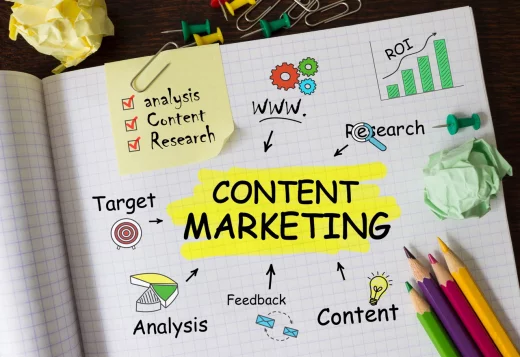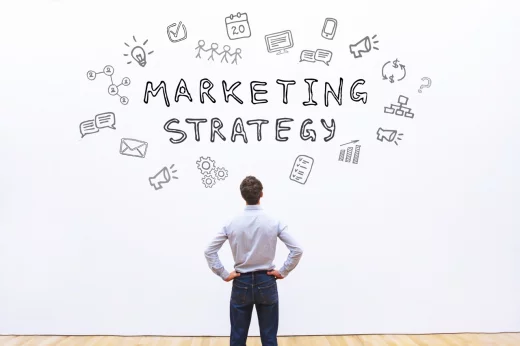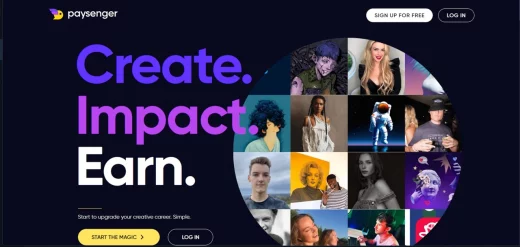
A robust marketing strategy is crucial in today's fast-paced digital landscape to stay ahead of the competition. One of the most effective techniques is utilizing user-generated content (UGC) to enhance your brand's credibility and visibility. In this article, we'll delve into the power of UGC in marketing, and its benefits, and share some of the best examples of user generated content you can leverage to bolster your marketing campaigns.
Additionally, we'll discuss the potential drawbacks of UGC, available tools and resources to manage it, and when it might not be a suitable approach for your brand. Without further ado, let's explore the world of user-generated content in marketing.
Introduction to User-Generated Content (UGC)
In the world of marketing, UGC is a term that refers to any content created and shared by users, rather than by brands or influencers. This can be anything from engaging Twitter posts, Instagram photos, testimonials, video reviews, and everything in between. Over the years, UGC has exploded in popularity because it enables brands to harness the immense power of their audience and demonstrate their products or services in a more authentic, compelling and humanized way.
The Power of User-Generated Content in Marketing

When it comes to marketing, UGC is a game-changer for many reasons. Perhaps the most significant of them all is its ability to convey an unparalleled level of authenticity as compared to traditional advertisement. Let's face it - people are more inclined to trust recommendations and feedback from their peers than ads created by brands themselves. This rings particularly true for millennials, who are known to be a lot more skeptical when it comes to traditional advertising. According to research, a third of all millennials don’t make purchases from an online brand unless they see reviews or photos from other people.
User-generated content is a powerful marketing tool due to its ability to convey authenticity and drive engagement. People are more inclined to trust recommendations from their peers than ads created by brands. With UGC, brands can tap into the trust that audiences have in each other, leading to a broader reach, increased engagement and enhanced online presence. Additionally, UGC is cost-effective because it saves time and resources that would be spent on creating content in-house or outsourcing to an agency. The result is impactful marketing campaigns that are more cost-efficient.
Benefits of Incorporating UGC in Your Marketing Strategy

There are several benefits to incorporating user-generated content in your marketing strategy. Some of these include:
- Building trust and authenticity: UGC is a powerful marketing tool that showcases real customer content, building credibility with your audience and fostering trust.
- Boosting engagement: UGC can boost engagement and establish a more profound connection with your brand by utilizing the creativity and authenticity of your audience.
- Enhancing SEO: UGC improves your search engine ranking. Google likes fresh and original content especially if it has backlinks to multiple sources.
- Save time and resources: It’s a lot cheaper to source UGC instead of creating in-house content or outsourcing to an agency.
- Increase sales and conversion: UGC creates a relationship of trust and loyalty with your audiences through word-of-mouth.
Top 10 User-Generated Content Examples for Social Media Platforms
- GoPro: GoPro showcases awe-inspiring user-generated footage on its Instagram feed. The company is known to primarily use UGC in all of its campaigns.
- Airbnb: Airbnb's Instagram feed is a treasure trove of stunning user-generated content, showcasing the authentic and diverse range of accommodations and experiences on offer. The company actively reaches out to users and asks to repost their photos. All of its Instagram feed is UGC.
- ASOS: ASOS invites customers to showcase their style using the hashtag #AsSeenOnMe, sharing the best user-generated content on their Instagram feed to create a community around their brand and demonstrate how their products look in real life.
- Coca-Cola: Coca-Cola’s “Share a Coke” campaign is one of the oldest examples of perfectly executed UGC strategy. In this campaign, the company rolled out bottles with names of people around the world. People posted a lot of photos with coke bottles with their names on it.
- LUSH Cosmetics: LUSH prioritizes their customers by encouraging them to share their experience with LUSH products and share them on Instagram. It uses UGC to create most of its Instagram Reels.
Other examples
- Lego: Lego invites people to their Facebook group “LEGO Ideas” There Lego enthusiasts share their original creations with one another and vote for the best ones.
- Starbucks: Starbucks launched a White Cup contest, asking artists to doodle on an empty Starbucks cup. Starbucks launched the winning entry as a limited edition cup.
- Doritos: Doritos cleverly saved its advertising budget by asking its customers to make their own Doritos ads. This led to an avalanche of user-generated ads or user-generated content on Twitter.
- Adidas: Adidas inspired creativity in its customers by using a Twitter trend hashtag #myneoshoot. This encouraged Adidas customers to do photo shoots wearing Adidas products for a chance to get featured.
Top 5 User-Generated Content Examples for Websites and Blogs

- Buffer: Buffer offers a unique "Buffer Stories" section where users can post the successes (that they achieved on Buffer). It's a cool resource if you're looking for inspiration and ideas. Go give it a look!
- TripAdvisor: TripAdvisor is successful only because of its users. The platform is designed in a way that encourages users to review, rate and submit photos of the destinations that they visit. TripAdvisor utilizes this content in its marketing campaigns.
- Quora: Quora is a question-and-answer website where all content is produced by the community. Content on Quora is a lot more believable and usually has very high engagement because everything is produced by real people who have no affiliation to the platform.
- BuzzFeed: BuzzFeed's "Community" section invites its users to submit articles, sometimes quizzes for publication on their website. This gives them access to organic user-generated articles.
- Medium: Content on the world’s biggest blogging platform, Medium.com is entirely community-generated.
Top 5 User-Generated Content Examples for E-Commerce and Online Reviews
- Amazon: Amazon is trusted by many due to its customer reviews. The user-generated Amazon reviews give valuable insights that benefit both customers and sellers. The reviews help customers make informed purchasing decisions and provide sellers with feedback to improve their products and services.
- Etsy: Etsy helps its users to make informed decisions by providing an opportunity to its users to create product listings and add reviews. Since both of these are being produced by the users themselves they qualify as user-generated content.
- Sephora: Sephora not only encourages its users to create user-generated content on their social media but also incentivizes them so that they would stay consistent.
- Trip.com: Trip.com has given the torch of being a travel guide to its users by allowing them to create user-generated content and give recommendations for various destinations. Since most of the users are locals or ex-travelers, readers trust this content more.
- Yelp: Yelp is a community of locals that helps people not familiar with their vicinity choose better options when around. They review businesses making tons of user-generated content while making a lot of traffic.
Drawbacks of Using User-Generated Content

While there are many benefits to using user-generated content in your marketing strategy, there are also some drawbacks to consider. These include:
- Lack of control: User-generated content often backfires for brands that do not moderate the content being produced. Successful brands control and make guidelines for UGC to monitor the content being produced by their users.
- Quality concerns: As professionals create content to market products and services, user-generated content doesn’t always follow the brand image.
- Legal issues: Sometimes user-generated content can also trigger legal issues for some products and brands. Copyright infringement is a problem that UGC content faces from time to time. That’s why it can be expensive to quality control every piece of UGC unless you have a big team.
In short, user-generated content can certainly help you achieve your marketing goals but it might not always be the ideal choice for every brand or business. For instance, a brand without a robust following may struggle to gather sufficient UGC, while another may lack the wherewithal or know-how to handle it adroitly. It's crucial to consider the upsides and downsides of utilizing UGC before embracing it in your marketing plan. However, this can be overcome by using UGC platforms and by working directly with creators.
What’s a UGC Platform?
A UGC platform helps brands source UGC directly from creators. This saves time, money and resources – since creators can produce content up to your standards and requirements.
Here is our recommended UGC platform:
Paysenger

Paysenger is a social marketplace that helps businesses collect user-generated content from creators. Brands can easily order on-demand content by sending detailed requests directly to UGC creators. In addition, the platform can also be used to host full hashtag challenges where the entire community gets engaged. Paysenger uses a tokenized economy using EGO token, so these contests can easily be used to distribute tokens to users in return for user-generated content.
Brands on Paysenger interact closely with the community and the community is always rewarded to participate in the brand’s growth by giving likes, comments and other reactions. Other features include:
- On-demand content: Paysenger allows brands to create campaigns, set requirements for user-generated content, and determine the price they are willing to pay for each piece of content.
- Quality control every submission: Creators can submit content through Paysenger once the campaign is live, and brands can review and approve it before purchasing it. Paysenger handles the payment process to ensure users are fairly compensated. Payments are returned if you’re not satisfied with the delivery.
- Tokenized economy: Users who contribute content can earn EGO tokens – the platform's native cryptocurrency. These tokens can easily be withdrawn and exchanged for non-digital currencies. Brands can use EGO tokens to compensate users and creators for their contributions.
Paysenger is available on iOS, Android and Web.
Conclusion: Embracing User-Generated Content to Enhance Your Marketing Strategy
To sum up, user-generated content is a highly effective marketing tool that can benefit brands of any size. It can help establish trust, foster engagement, improve search engine rankings, and ultimately increase sales. Nevertheless, it is crucial to understand the potential risks, such as the loss of control and legal complications. By utilizing resources like Paysenger, you can expertly manage and capitalize on user-generated content to elevate your marketing strategy and propel your brand forward.
If you're looking to level up your marketing strategy with user-generated content, Paysenger is a valuable resource to consider. With Paysenger, you can purchase high-quality content from your customers in a simple and secure way, while also ensuring fair compensation for their contributions. By incorporating UGC through Paysenger, you can build authenticity and engagement with your audience, enhance your SEO, and drive sales and conversions. Keep in mind that while UGC can be a powerful marketing tool, it's important to weigh the potential drawbacks and use it appropriately.
Visit the Paysenger website to learn more and start harnessing the power of user-generated content today!
